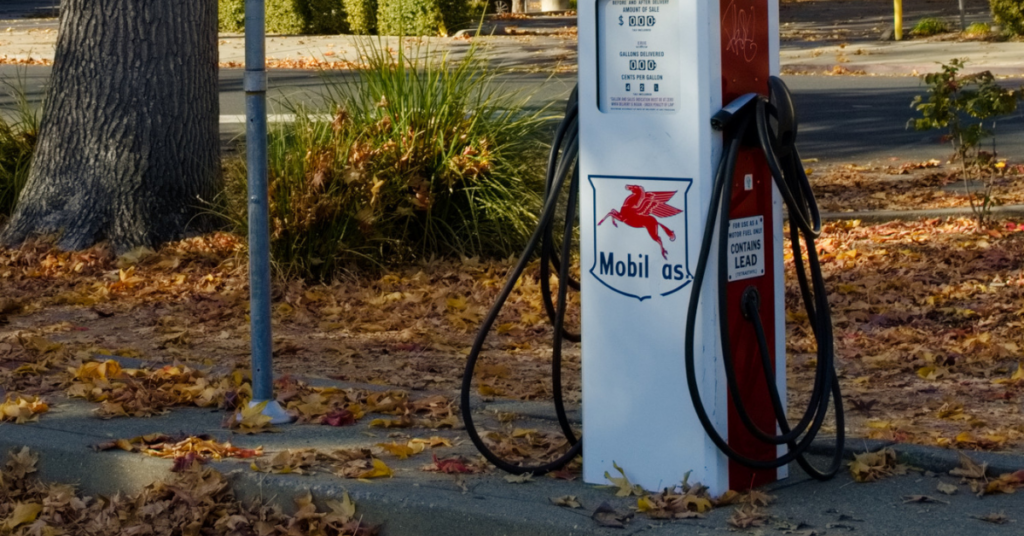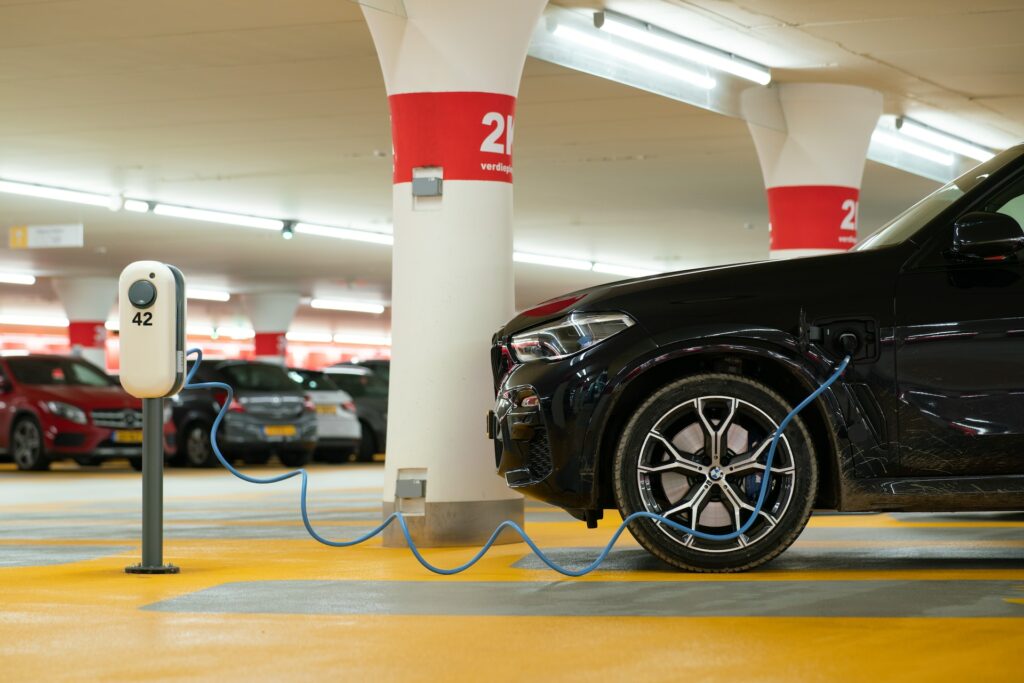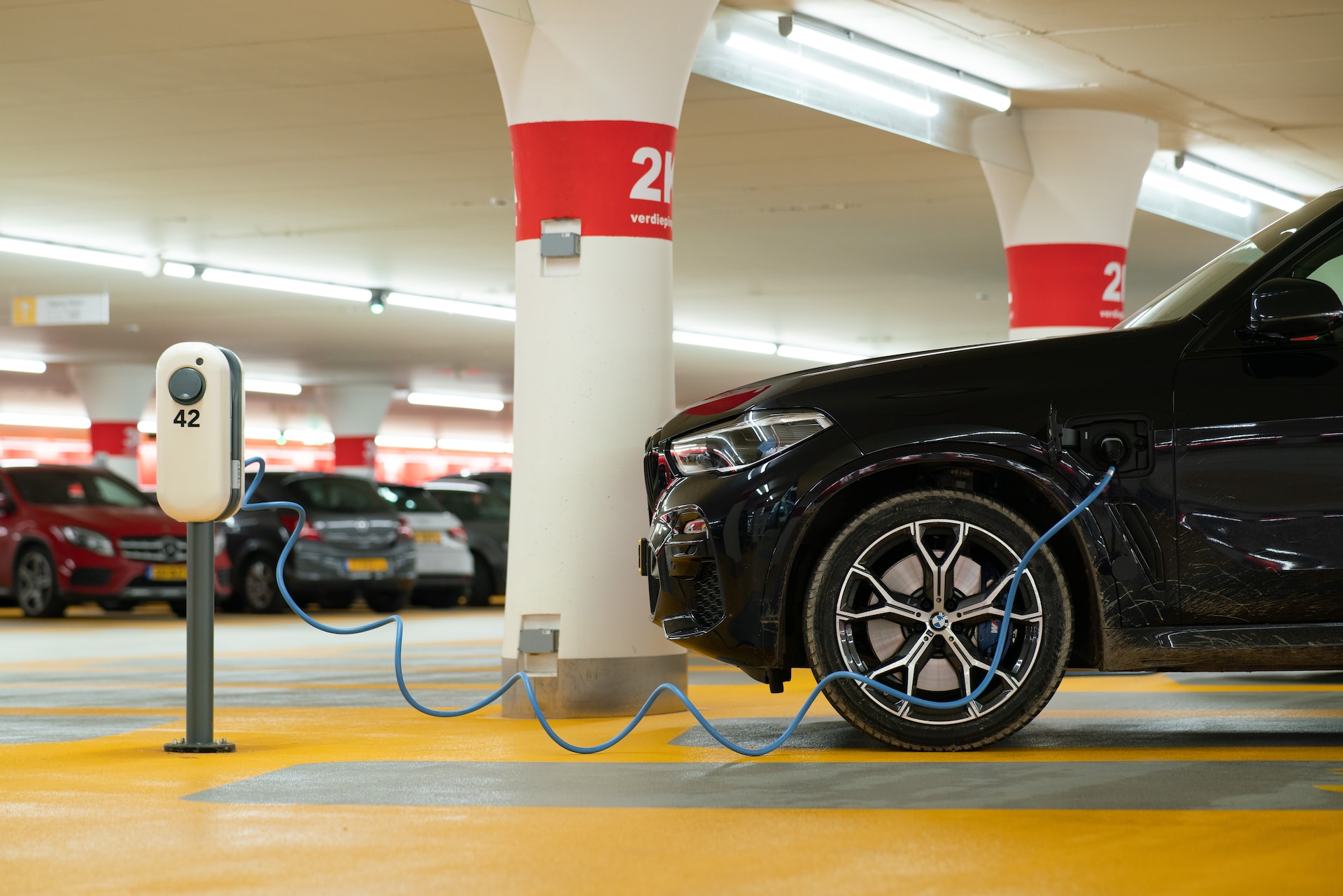
Share the spark with EV carshares

Electric vehicle (EV) carshare is an effective strategy in speeding the transition to zero emissions transportation, providing more affordable transportation options and syncing up with other smart growth solutions. This strategy is worthy of public investment.
In our EV blog series, we’ve shared strategies in the zero-emission fleet transition which work in concert with smart growth. These strategies can both advance the EV transition and reduce the need to drive so much. They include electric carshare services, charger-oriented development, the NEVI program, equitable access to chargers, integrating smart parking policy with EV-charging, and electric micromobility. To learn more about reducing transportation emissions, check out our report Driving Down Emissions and go here to learn more about CHARGE, the coalition we co-lead on EV issues.
Carshare is a model of car rental where people rent cars for short periods of time, such as by the hour or minute. Sometimes the car has a home base that the user brings it back to, and some carshare systems are “free-floating” so that the user can drive a car on a one-way trip, usually within a limited area such as a city, and leave it at the destination for the next user. Electric carshare simply means providing this kind of service with electric cars instead of gas-powered cars.
Our partners at Forth, which is a member of the Coalition Helping America Rebuild and Go Electric (CHARGE), recently released Community Impacts: Accessible Electric Vehicle Carshare Programs which outlines the benefits of electric carshare and the key strategies to develop an effective program.
Why is EV carshare such a powerful strategy, and how does it help on both fronts of the battle to reduce emissions?
Supporting the transition to zero emissions
First, EV carshare moves more travel from gas-powered cars to EVs. Better than one person buying one EV, multiple people get to share the use of one EV car. Since most privately owned vehicles sit idle 95 percent of the time, a carshare vehicle delivers more bang for the buck if it is well-utilized.
In addition, giving more than one household access to each EV means more people getting real-world experience using these kinds of cars. People who are more familiar with EVs are more likely to buy one if and when they make a new car purchase.
One more benefit EV carshare can deliver to the EV transition is charging infrastructure. EV carshare programs are typically designed to provide charging infrastructure for the vehicles serving the program. Depending on how the program is designed, it can also provide charging options for nearby EV owners. For example, Evie Carshare in the Twin Cities (which has seen impressive growth in usage since we last wrote about it) has four-port charging locations where two spots are dedicated to the carshare program, and the other two are available to the public.
A transportation option that supports other travel modes
Besides being an effective strategy to support fleet transition, EV carshare is paradoxically a way to invest in cars to encourage less driving instead of more. For folks who rely primarily on walking, biking, and public transit day-to-day, every once in a while a car is useful for a particular trip. If you have access to a carshare when you need it, there is no need to waste money on purchasing, insuring, and storing a car you use infrequently.
A carshare car can replace anywhere from 5 to 15 cars that the users of the service would otherwise own. Since they pay per trip, carshare users are less likely to choose driving for a trip than car owners, resulting in less traffic. Carshare can save Americans thousands of dollars annually that they might otherwise spend on car ownership costs.
Advancing equity
Transitioning America’s car fleet to electric means encouraging the purchase of new EVs. Most new car owners are wealthier and whiter. It’s hard to get around the issue that programs that subsidize the purchase of a new car for individuals, even if it is an electric car, and focus government subsidy on an already privileged group of people.
EV carshare can flip this script, delivering benefits and electric mobility to people less likely to be able to afford a car, generally lower-income and often communities of color. For example, an EV carshare program in rural California supports farmworkers and raiteros, the drivers who help get them to their jobs and essential services.
Worthy of public investment
While carshare operates in a few well-off and densely populated areas with little-to-no public subsidy, it has become clear that the infrastructure and service just doesn’t pencil as a purely private enterprise in most of the U.S. – just like every other transportation option from driving to flying. This begs the question of whether and how we should invest in carshare as a transportation option. With the IRA and IIJA investing billions in EV charging infrastructure and subsidies for EV purchase, carshare’s multiple benefits make it look like a very attractive national investment.
The next transportation reauthorization is sure to include another tranche of funding and programs supporting the EV transition. For all the reasons outlined above, Congress should make sure EV carshare is a significant piece of the pie.
For more information on how to implement effective EV carshare programs (including insurance, procurement, pricing, tech barriers, payments & privacy, fleet management, host sites, timelines and utilization) check out Forth’s resources on the topic.




